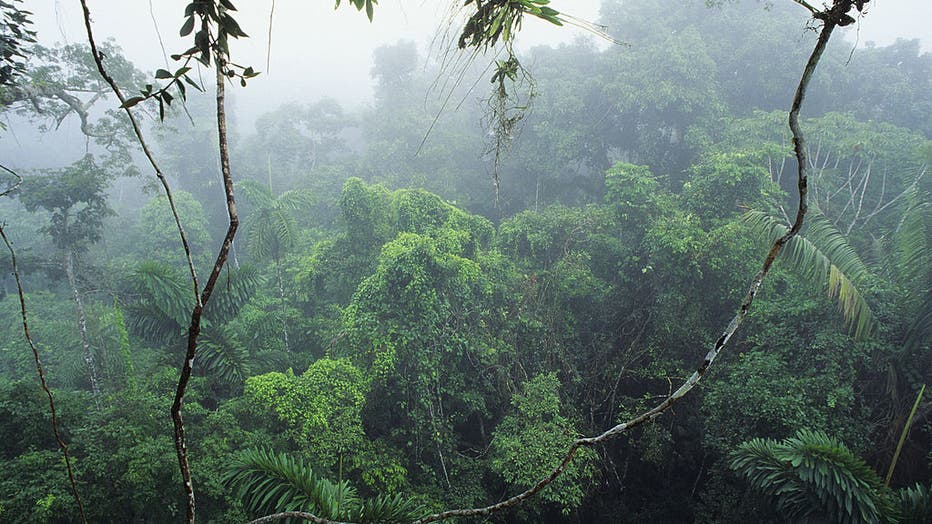Massive system of ancient cities discovered in the Amazon: Study

Researchers discover 143 ancient drawings in Peru that can be seen from space
A cultural anthropology team at Yamagata University in Japan recently announced?the discovery of 143 huge ancient drawings etched in Peruvian soil known as ?geoglyphs.??
LOS ANGELES - A vast and highly complex system of ancient cities dating back nearly 3,000 years has been discovered in the Amazon rainforest, according to a study published in the journal Science on Jan. 11.
The incredible structures of pre-Hispanic settlements containing wide streets, raods, plazas and clusters of monumental platforms was discovered in the Upano Valley of Ecuador's Amazon rainforest, in the eastern foothills of the Andes.
It took more than two decades for researchers to thoroughly investigate the region before uncovering it's secrets, according to the study.
A team of researchers from France, Germany, Ecuador and Puerto Rico used a remote sensing method called light detection and ranging, otherwise known as lidar, to detect the incredible structures engulfed deep in the jungle.
What is lidar?
Lidar is a remote sensing method that uses light in the form of a pulsed laser to measure ranges of the Earth, according to the National Ocean Service (NOAA).
A typical lidar instrument consists of a laser, a scanner and a specialized GPS receiver. Airplanes and helicopters are the most commonly used mechanisms for the technology.
iPhones today even have lidar technology. A common application for lidar is to measure seafloor and riverbed elevations.
So who lived there?
Scientists estimate the city was built over 2500 years ago and was home to people for up to 1,000 years.
Scientists speculate that anywhere from 10,000 to 100,000 people lived in these cities at one time.

FILE - Ecuador, Amazon Basin, Near Coca, Rain Forest, Upper Canopy, Mist Rising After Rain. (Photo by Wolfgang Kaehler/LightRocket via Getty Images)
While archaeologists don't know much about the people who lived there, the groups of people were clearly well-organizsed and interconnected based on the complexity of the infrastructure.
"It changes the way we see Amazonian cultures. Most people picture small groups, probably naked, living in huts and clearing land - this shows ancient people lived in complicated urban societies," says co-author Antoine Dorison.
"The road network is very sophisticated. It extends over a vast distance, everything is connected. And there are right angles, which is very impressive," Dorison adds.

